#wostel
Explore tagged Tumblr posts
Photo
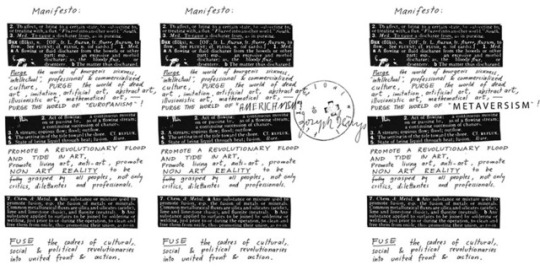
Fluxus
https://www.widewalls.ch/what-is-fluxus/
It was the year 1961 when George Maciunas, an extravagant art historian from Lithuania, proclaimed the birth of Fluxus. It was a new group of aspiring artists gathered around John Cage, a composer who taught a series of classes in Experimental Composition at the end of the 1950s at the New School for Social Research in New York City.
Avid fans of Marcel Duchamp and Dadaism, the idea of blurring the line between everyday life and arts with a sense of humour and the urge to get away from clear definitions of what an artwork should be, imposed by museums and other cultural institutions, these artists gave their own interpretation of experimental and performance pieces.
“The group consisted of names such as Al Hansen, Jackson Mac Low, Dick Higgins, Nam June Paik, George Brecht, Robert Filliou, Yoko Ono, La Monte Young, Henry Flint, Wolf Wostell and the influential Gutai artists, all following the guidance of George Maciunas”
Fluxus could be described as “open-minded”, available to anyone and everyone who was interested, constantly on the move, in the flow. Its artworks are events, actions, performances that aim to prove that life is art and art is life, that anybody could do it and that they should.
For George Maciunas and the Fluxus artists, it was about merging cultural, social and political realities into a single entity which will become the new face of action, of revolution. The Fluxus Manifesto fought against “Europeanism” and “Americanism”, putting creative tools into the hands of regular folk. And so, performances and events mixed with simple everyday gestures, such as smoking, breathing, chatting, to create unique structures, so familiar yet so brand new.
On the other hand, the Fluxkits, or Fluxus boxes, were introduced by, you’ll guess, George Maciunas. Marketed through the mail, these were collections of objects made by other artists, ranging from graphical scores for events, interactive boxes and games, print cards, journals, films.
0 notes
Photo


"Performance, time to act ..." The term Performance art began in the 1960s in the United States. Originally it was used to describe any artistic event in which poets, musicians, and directors participated. With their creativity, they challenged the audience and forced them to think in unconventional ways, break stereotypes, turn values, expand borders and lift social taboos. Performance art is always action, movement. It can be done both by the artist himself and by the audience. In the early 60's actively experimenting with the movement of the body, sounds and smells. Andy Warhal began to create films and videos, and later to conduct performances, such as "Exploding Plastic Inevitable" (1966). Yoko Ono performed with her play "Wall for Orchestra" (1962). Carole Schneiman "Meat Joy" (1964), Wolf Wostell "Happening YOU" 1964, Joseph Boyce, Yayoi Kusama "Happenings". Such artists as Joan Jonas, Nam Jan Pike, Wolf Wostell, Allan Caprou, Vito Akkonci and Chris Burden took an active part in all shows. During this period, a connecting thread was created between performance and body art. In 1970, the word performance meant living art. Artists - performers established direct contact with their viewers. There was no longer any need for intermediaries: agents, brokers, galleries, accountants. Only live communication. Performance permeated the song and dance, and in 1971 the dawn of the Body Art (branch of the performance) was observed. Autobiographical plays began to gain popularity. Christopher Burden surprised the sophisticated public with his work "Shot", in which the left hand of the artist was shot (with the help of an assistant) from a distance of about five meters. After this, Burden's works were sent to a psychiatric hospital. Marina Abramoviich in 1974 demonstrated to the public "Rhythm 0". This is one of the most complex and well-known performances in the artist's work. Abramovich placed on the table 72 objects that people could use as they liked. Some of these objects could be fun, while others could be hurt. Among them were scissors, a knife, a whip and even a pistol with one cartridge. The artist allowed the public within six hours to manipulate her body and movements. Initially, the audience behaved modestly and cautiously, but after a while, during which the artist remained passive, the participants became more aggressive. Abramovich later recalled: "My experience shows that if you leave the decision behind the public, you can be killed" Laurie Anderson, Clifford Owens, Gillian Walsh, Pat Oleshko and Rebecca Patek also used topics on border violations, shame, and sexual exploitation. In the 1980s, thanks to new technologies, the art of performance received a new frame. Artists started using PowerPoint as the essence of performance. Where the art of performance comes from here is only a matter of combining technology and imagination. The main characteristics of the performance: 1. Effective art is "here and now". 2. Performance has no rules or recommendations. This is experimental creativity. 3. The art of performance is not for sale. However, you can sell tickets tickets and movie rights. 4.Artistic art can consist of painting or sculpture (or both), poetry, music, dance, opera, film frame, etc. 5. Performance - the artistic movement. Many educational institutions have courses or special programs dedicated to this work. (In the US and Europe they certainly are) 6. The art of performance is closely related to the conceptual. 7. Performance is a memorable art. It can be interesting, funny, shocking or horrific. The main thing is to cause emotions.
1 note
·
View note
Text
Kitchen Mural for WOSTEL - Coworking Space Berlin-Neukölln.

Kitchen Mural for WOSTEL - Coworking Space Berlin-Neukölln.
I was asked to paint a Mural on the long Wall at WOSTEL´s Tea Kitchen in 2010. To match the vintage interior i choose old photos i found in a photobook on the street from a family dinner.Painted it in various layers of brown scumble.
www.wostel.de
0 notes
Photo
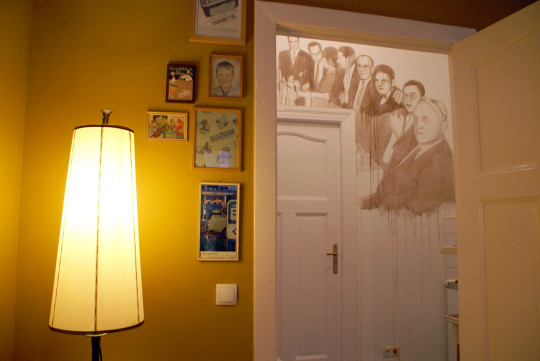

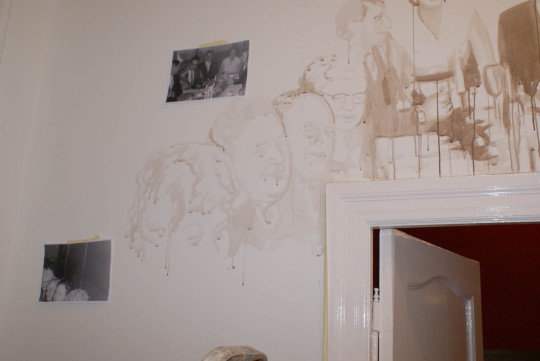

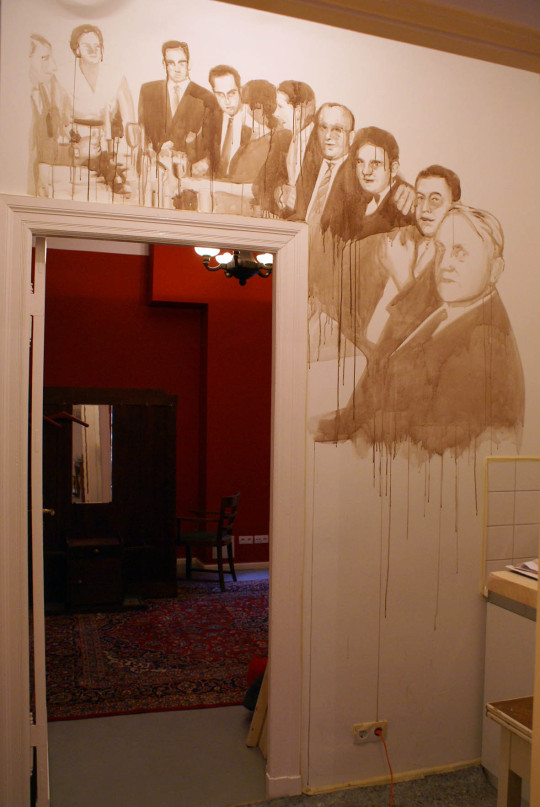
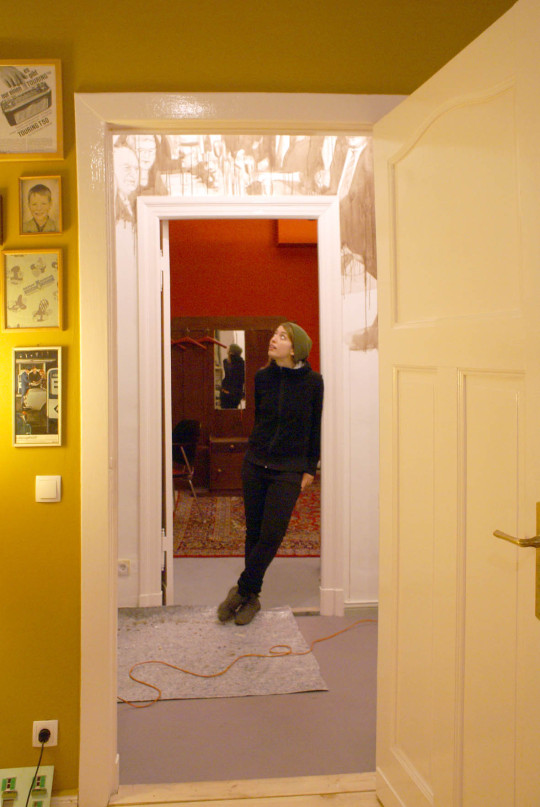
Kitchen Mural for WOSTEL - Coworking Space Berlin-Neukölln.
I was asked to paint a Mural on the long Wall at WOSTEL´s Tea Kitchen in 2010. To match the vintage interior i choose old photos i found in a photobook on the street from a family dinner.Painted it in various layers of brown scumble.
www.wostel.de
0 notes
Text
Das Wostel geht kegeln!
Letze Woche war das ganze Coworking Team Kegeln. Unsere Location Scout aka Neukölln Expertin aka Detektivin wählte für dieses Ereignis die "Final Bar" in der Sonnenallee.
0 notes